The Church whose ruins you face was built or renovated in 1497, as the year on top of the portal shows.. Archaeological excavations between 2011 and 2015have revealed that a parish church was located here before 1497. Many skeletons were discovered during the excavations inside and outside of the church building. Those skeletons indicate a large medieval cemetery next to the church. There are also some traces of a residential development from the time before the church had been built.
You stand on the eastern spur of the prominent Muracher Berg, which raises from the upper Rhine River Plains, may have been used in prehistoric and early historic times by people. The first secure evidence of a settlement is the so called “Grubenhaus”, which was found in 2014 during digging inside the ruins of the Church, which can be dated to the time before the turn of the Millennium.”‘Muron’ (Murach) was first mentioned in a document in 962 and shortly after that a church was built over this pit. After 962 a church was built with. Between the 12th and 15th century it was an attested parish church which was in the possession of the Bishop and the cathedral chapter of Konstanz until 1466. An extensive cemetery with approximately 200-300 buried bodies around and inside the church also belonged to it.
There is no clear information why the church was abandoned by the Augustinian monastery and replaced by a new building (from 1497). The patrocinium of Saint Severin, after the ruin of the church was named 'Severinskapelle', was first mentioned in 1488. A relief plate with the figure of the Saint, which was found inside the church, suggests late medieval Severin pilgrimages. When Margrave Karl II introduced the 'new (Protestant) church retreat' in 1556, these pilgrimages were banned and the church closed. Soon after, the church fell into disrepair. Up to 1970, the church ruins belonged to the Murcher Hof and therefore changed hands several times. Family Sonntag, who established a small cemetery slightly to the south of the church ruin during the 20th century, sold the entire property to Denzlingen.
Reconstruction drawing and present state of the relief plate (in the Jakobuskirche):
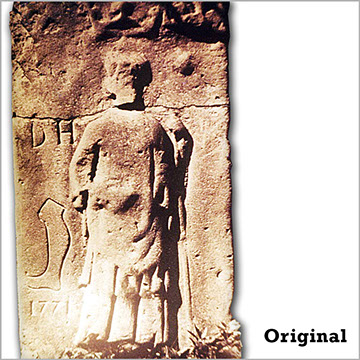
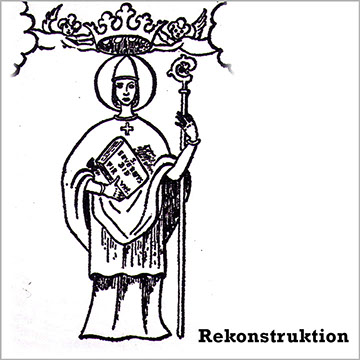
![]()
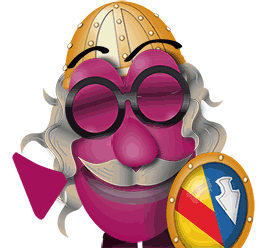

Maurach wird dem Grafen Guntram entzogen und an Konstanz geschenkt
Bis zur Mitte des 10. Jahrhunderts gehörte der Ort Maurach (locus Muron) zum Besitz eines Grafen Guntram. Durch einen Reichstagsbeschluss wurde ihm der Besitz im Jahre 952 entzogen und von Kaiser Otto dem Großen 962 an den Bischof Konrad von Konstanz übertragen. Danach hören wir fast zwei Jahrhunderte nichts mehr von Maurach.
Nach dem Wortlaut der kaiserlichen Schenkungsurkunde hätte Maurach nach Konrads Tod im Jahre 975 an das Konstanzer Domkapitel fallen müssen. Insofern verwundert es, dass Kaiser Friedrich Barbarossa 1155 dem Konstanzer Bischof (Hermann I.) unter anderem den Hof zu Maurach mit der Kirche (curtis in Muron cum ecclesia) als Besitz bestätigte.
Der Konstanzer Bischof verkauft den Mauracher Hof mit der Kirche an sein Domkapitel
Erst am 1. Juli des Jahres 1302 verkaufte der Konstanzer Bischof (Heinrich II.) die Hofgüter in Maurach und Glotter samt zugehörigem Kirchensatz mit Leuten, Gütern und allem Zubehör für 180 Silbermark Konstanzer Gewichts an sein Domkapitel. Fortan standen nun die Einkünfte der Kirche einschließlich des Zehnten den Domkanonikern zu; diese wurden aber zugleich verpflichtet, einen geeigneten Weltpriester anzustellen und ihm einen entsprechenden Lebensunterhalt zu garantieren.
Bereits in der Kaiserurkunde von 1155 war von einer Kirche (ecclesia) beim Hof die Rede, und auch im Zusammenhang des erwähnten Verkaufs der Hofgüter in Mure und Glotern durch Bischof Heinrich II. an das Konstanzer Domkapitel im Jahre 1302 ist das Patronatsrecht über eine zugehörige Kirche erwähnt.
Stand die Mauracher Kirche unten beim Hof oder oben auf dem Berg?
Lange war unklar und strittig, wo sich diese (Pfarr-)Kirche befunden hat. Durch die Entdeckung des Friedhofs, dessen Skelettfunde durch die Radiokarbon-Methode (14C) in die Zeit des 12. bis 14. Jahrhunderts datiert wurden, kann nun als gesichert gelten, dass sich die Pfarrkirche auf dem Berg befunden hat.
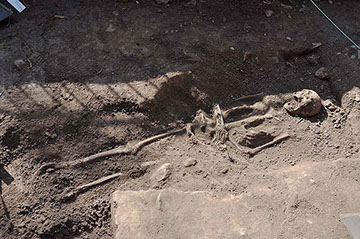
Abb.: Alle Gräber auf dem Friedhof sind „ge-ostet“, das heißt: Die Füße der Bestatteten liegen im Osten, der Kopf im Westen.Es muss also eine Vorgängerkirche zur Kirche von 1497 gegeben haben. Dazu dürften die Mauerreste gehören, die im Innern der Kirchenruine aufgedeckt wurden.
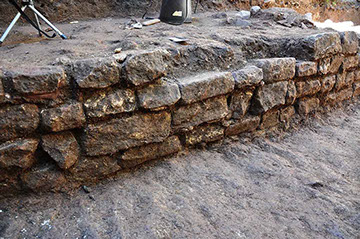
Abb.: Die Reste einer sorgfältig gefügten Mauer im Innern der Kirchenruine, die im Jahr 2012 entdeckt wurden, weisen auf einen Vorgängerbau (vor 1497) hin.Der Übergang von Hof und Kirche an das Chorherrenstift Waldkirch
Am 3. September 1466 verkauften die Konstanzer Domherren den Capittels dingkhoff in Glotterntal mit lútt und guetter, sunder den Hoff genannt Mure mit dem kirchensatz und verlihung der kirchen für 680 Gulden an das Margarethen-Stift in Waldkirch. Das ehemalige Waldkircher Frauenkloster war 1431 nach einer Zeit des Niedergangs in ein Chorherrenstift umgewandelt worden.
Die Verlegung der Pfarrei in das Glottertal
Spätestens von diesem Zeitpunkt ab muss es zwei Kirchen gegeben haben: In den Schriftquellen ist außer der Pfarrkirche in Muren von einer Filialkirche oder Kapelle die Rede, die offenbar bei den Hofgütern im (heutigen) Glottertal errichtet worden war. Denn zum 18. September 1469 ist von Männern und Frauen die Rede, die in die vier vogtyen [Unter- und Oberglottertal, Ohrensbach und Föhrental] hoeren und in die pfarrkilchen zue Mure und in die filial oder cappellen gen Glotter.
Bald aber übernahm die ehemalige Filialkirche im Glottertal die Funktion der Pfarrkirche. 1475 gelangte das Präsentationsrecht an der Pfarrkirche mitsamt dem Glottertäler Dinghof über den Freiburger Bürger Albrecht Brun 1475 an das Freiburger Deutschordenshaus.
Wie kam es zum (heutigen) Namen „Severinskirche“?
In einer Urkunde des Jahres 1488 ist erstmals der hl. Severin als Patron der Mauracher Kirche erwähnt. Obwohl die Vorgängerkirche zu diesem Zeitpunkt mindestens schon drei, vielleicht sogar schon fünf Jahrhunderte als Pfarrkirche bestanden hat, ist in keinem der zahlreichen Schriftzeugnisse ein Kirchen-Patrozinium bezeugt.
Der (Neu-)Bau der Kirche von 1497
Die einstige „Mutterkirche“ auf dem Mauracher Berg ist dann offenbar, wie die Jahreszahl über dem Portal vermuten lässt, im Jahre 1497 (als Wallfahrtskapelle?) neu errichtet worden. Es liegt nahe anzunehmen, dass auch der Friedhof vor der Kirche, seit diese nicht mehr als Pfarrkirche diente, aufgegeben und eingeebnet worden ist. Die Funktion der Pfarrkirche (ecclesia parrochialis in Glautter) übernahm die weiter glottertalaufwärts errichtete Kirche, die zunächst als Filialkirche für die Bewohner der dortigen Höfe gedient hatte.
Die „Abschaffung“ der Wallfahrt in der Reformation
In Folge der Einführung der „Neuen Kirchenordnung“ in der Markgrafschaft im Jahre 1556 fand das zuvor blühende Wallfahrtswesen recht bald ein Ende, und dies dadurch wurde wohl auch das Schicksal der Severinskirche besiegelt. Der Bruder, der die Pilger betreute und von deren Almosen lebte, wurde abgeschafft und das Kirchlin beschlossen.
Von der Witwe des Markgrafen Jakob III. gelangten die Liegenschaften (Mauracher Hof und Kirchenruine) nach mehreren Besitzerwechseln 1706 an die Familie Sonntag, die 1913 südlich der Kirchenruine einen kleinen Familienfriedhof anlegte. Als die Gemeinde Denzlingen im Jahre 1970 den Mauracher Hof mitsamt der Kirchenruine auf dem Berg von der Familie Sonntag erwarb, wurde dieser Friedhof aufgehoben.
 Autor dieses ArtikelsDieter Geuenich
Autor dieses ArtikelsDieter Geuenich Quellen / CopyrightsVideo: Animation, Illustrationen, Luftbild
Quellen / CopyrightsVideo: Animation, Illustrationen, Luftbild
Quelle: Medienhaus Denzlingen, Foto und Video Patrick DirrSebastian BRATHER, Kirche Friedhof und Burg (?) auf dem Mauracher Berg bei Denzlingen, in: Archäologische Nachrichten aus Baden 86/87 (2013) S. 59-66.Robert FEGER, Die Reliefplatte vom Mauracher Berg, in: Schau-ins-Land 71 (1953) S. 49-53.Dieter GEUENICH, Denzlingen, eine alemannische Siedlung im Breisgau (Freiburg 1983) S. 51-56 und S. 98-110.Dieter GEUENICH, Graf Guntram und der Breisgau. Ein Hochverratsprozess im Jahre 952 und seine Folgen, in: ‘s Eige zeige. Jahrbuch des Landkreises Emmendingen für Kultur und Geschichte 1 (1978) S. 9-14.Dieter GEUENICH – Dieter OHMBERGER, Denzlingen, Band 1: Von den Anfängen bis zum Dreißigjährigen Krieg (Denzlingen 2013) S. 41-71.Dieter GEUENICH, Curtis in Muron cum ecclesia. Zur Lage und Bedeutung der Kirche zu Maurach (Denzlingen) im Mittelalter, in: Grosso Modo. Quellen und Funde aus Spätantike und Mittelalter. Festschrift für Gerhard Fingerlin zum 75. Geburtstag, hg. von Niklot KROHN und Ursula KOCH (Forschungen zu Spätantike und Mittelalter 1, Weinstadt 2012) S. 215-224 [mit umfangreichen Quellen- und Literaturangaben].Benjamin HAMM – Sebastian BRATHER, Ausgrabungen in und um die Severin-Kapelle auf dem Mauracher Berg, in: Archäologische Ausgrabungen in Baden-Württemberg 2011 (Stuttgart 2012) S. 278-281.Benjamin HAMM – Jens REINECKE - Christoph AUGENSTEIN - Sebastian BRATHER, Weitere Ausgrabungen in und um die Severinkapelle auf dem Mauracher Berg, in: Archäologische Ausgrabungen in Baden-Württemberg 2012 (Stuttgart 2013), 315–318.Bertram JENISCH - Harald VON DER OSTEN-WOLDENBURG, Bodenradaruntersuchungen an der Severin-Kapelle auf dem Mauracher Berg bei Denzlingen, in: Archäologische Ausgrabungen in Baden-Württemberg 2010 (Stuttgart 2011) 265–269.Thomas ZOTZ, König Otto I. , Graf Guntram und der Breisgau, in: Zeitschrift für die Geschichte des Oberrheins 137, Neue Folge 98 (1989) S. 64-77. Weiterführende LinksWenn Sie mehr zur Geschichte der Mauracher Kirche wissen wollen:Video
Weiterführende LinksWenn Sie mehr zur Geschichte der Mauracher Kirche wissen wollen:Video
Archäologischen Ausgrabungen Denzlingen Mauracher Berg St. Severinskapelle , am 05.10.2014 hochgeladen von Hans-Jürgen R. P. van Akkeren:
www.youtube.com/watch?v=j0XiyGkrvWo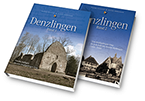 BuchempfehlungDie spannende Ortschronik der Gemeinde Denzlingen.Erhältlich bei
BuchempfehlungDie spannende Ortschronik der Gemeinde Denzlingen.Erhältlich bei
• Buchhandlung Losch
• Schreibwaren Markstahler
• Rathaus Denzlingen
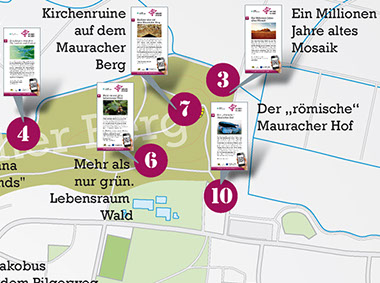



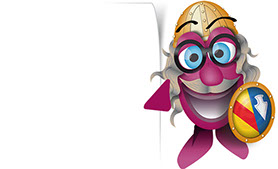
Für alle Geocacher
Display 7:
N 48° 04’ 35.0”
E 007° 54’ 00.7”Display 3:
N 48° 04' 39.3”
E 007° 53' 58.6”Display 4:
N 48° 04' 33.1”
E 007° 53' 40.2”Display 6:
N 48° 04‘ 32.5“
E 007° 53‘ 55.4“Display 10:
N 48° 04’ 27.3”
E 007° 54’ 03.8”Display 25:
N 48° 04’ 28.4”
E 007° 55’ 22.2”

Für alle Geocacher die ganz genauen Positions-Daten:
Display 7:
N 48° 04’ 35.0”
E 007° 54’ 00.7”
























